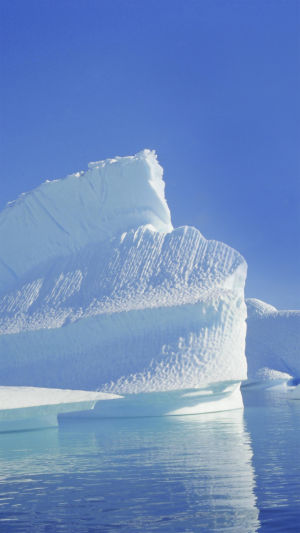Do you know anything about icebergs? You probably only read about it in a magazine or on your phone. So let's take it a step further. An iceberg is a large area of mountain ice that has escaped from a glacier or ice shelf and is floating freely in the ocean.
As glaciers drift in the ocean, about 90 percent of their volume sinks below the surface of the water, so looking at the shape floating on the surface can't tell what it looks like underwater. Icebergs are not really mountains, but large chunks of ice floating in the ocean.
How do icebergs form?
A large mass of floating freshwater ice has fallen into the sea from the break-up of a glacier or polar ice sheet, usually around Greenland in North America.
Icebergs mostly form in the spring and summer, when warmer weather accelerates the rate at which glaciers or ice sheet edges break apart.
Some 10,000 icebergs are produced each year from the glaciers of western Greenland alone.
Where a glacier or ice shelf meets the sea, the movement of ice and water causes the end of the glacier or ice sheet to break off into the sea and become an iceberg.
Ice food chain.
Icebergs look so pure. Over tens of thousands of years, as it drifted out to sea, it picked up many minerals from the air.
As it melts, the icebergs release nutrient-rich powder that feeds the phytoplankton, which in turn feeds the krill.
A lot of organic matter accumulates around icebergs, and the food chain goes all the way up to seabirds. There are an estimated 1,000 icebergs in the Weddell Sea, and their biological productivity is hard to measure.
Most krill near icebergs die naturally and sink to the bottom, taking with them the phytoplankton they eat and the carbon dioxide they absorb from the air.
More than 95 percent of Antarctica is covered by ice and snow all year round. The total amount of ice and snow is about 27 million cubic kilometers, accounting for more than 90 percent of the global total and 72 percent of the world's available fresh water.
It has enough fresh water to supply the world for 7,500 years. As a result, Antarctica is man's largest reservoir of fresh water, and it is rarely polluted and the water quality is very good.
Icebergs are dangerous: the bane of ships.
Icebergs may seem like wonderful things to us on the outside, but they don't seem so wonderful to people who sail at sea.
Icebergs are the bane of ships. In history, numerous ships have sunk because they hit icebergs, causing too much water in their cabins, including the "unsinkable" Titanic.
Although science and technology have largely prevented such incidents from happening, they still happen sometimes.
Icebergs are an extremely valuable source of fresh water, but we have no way to use them.





